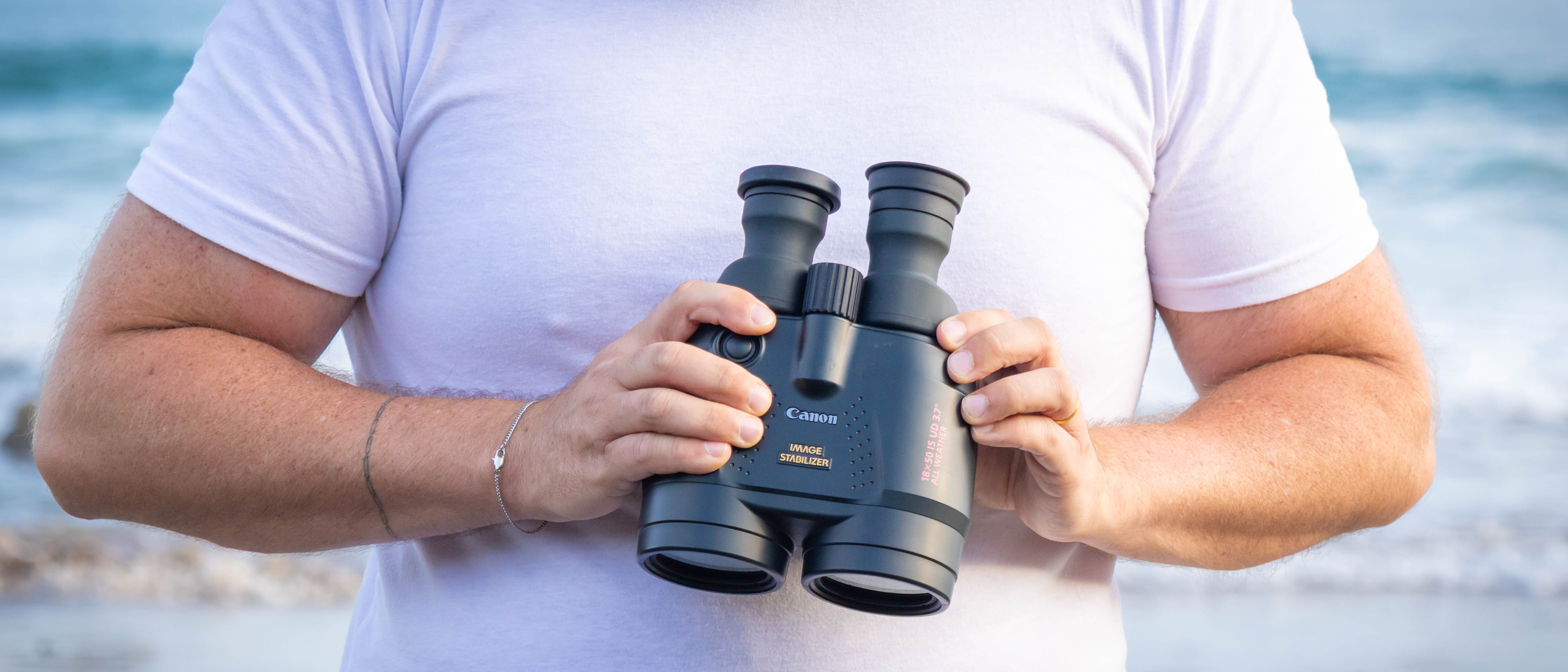Space Verdict
These porro prism Canon binoculars have a fantastic image stabilization system with good optics — ideal for stargazers whatever the location. Plus, the build quality is decent. It only loses a star for not being waterproof or fogproof (despite being named 'all-weather').
Pros
- +
Stargazing ready with 18x magnification
- +
Features are worth the price
- +
Bright views with 50mm objectives
Cons
- -
Heavy and large
- -
Pricey for beginners
- -
AA batteries required for IS
- -
Not water- or fogproof
Why you can trust Space.com
What makes a pair of binoculars good for stargazing? First of all, they need to be the best binoculars for long distance viewing. This means they need large magnification and wide objective lenses so you get up close and clear images of the night sky. Can anything top these requirements? Yes, image stabilization which the Canon 18x50 IS UD have.
Large magnification binoculars tend to be heavy and it's hard to keep night sky views steady, unless you use a tripod. The addition of image stabilization on these Canon binoculars takes this problem away. While these are heavy and bulky binoculars, I still think they're a great option for stargazers and should be considered by anyone keen to get good views of the night sky, if their budget allows.
Canon 18x50 IS UD all-weather binocular review
Canon 18x50 IS UD: Design
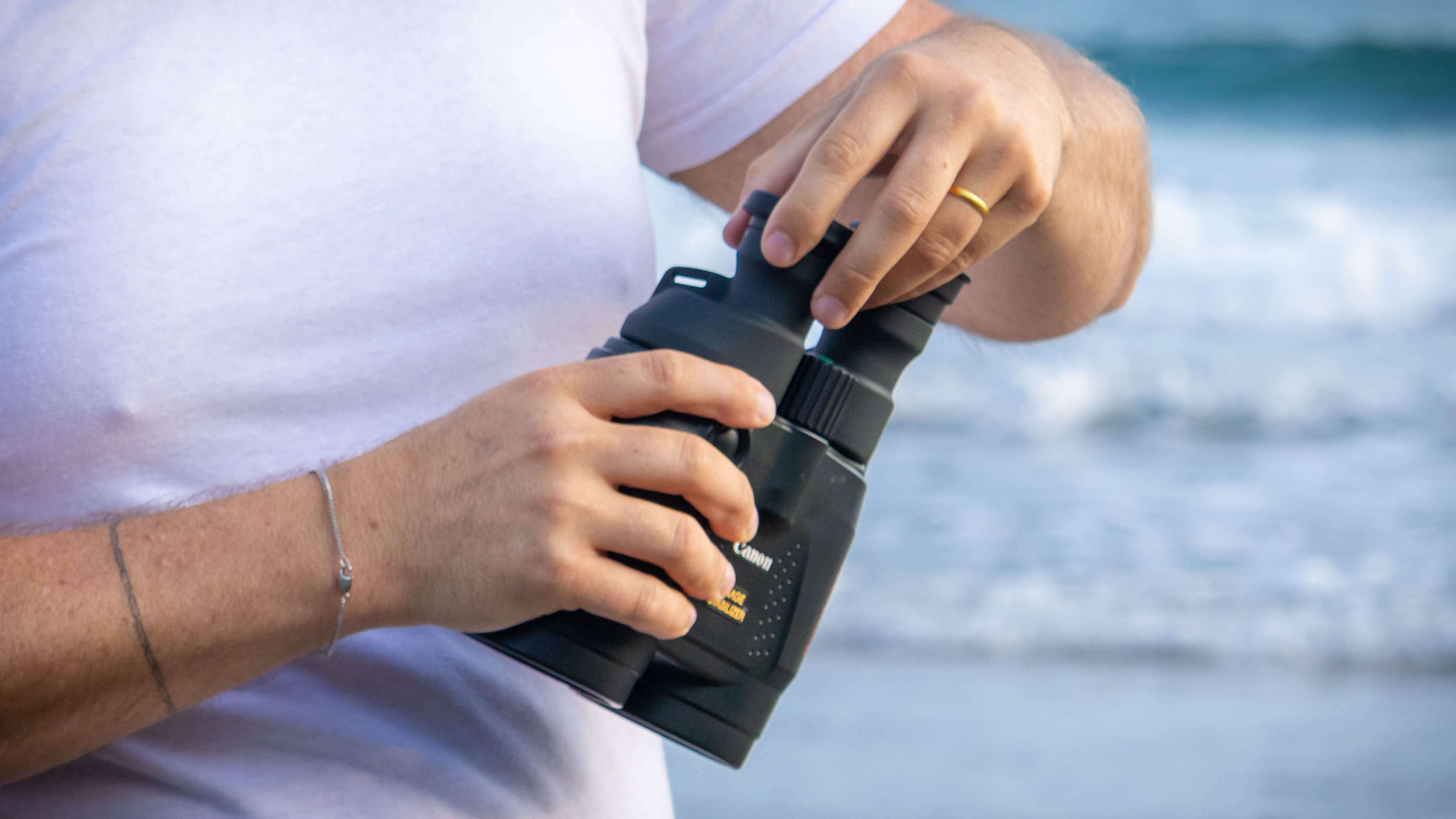
- Fantastic optics
- Worth noting they're not waterproof or fogproof
- Grip undeterred even in sub-optimal weather
Although advertised as all-weather binoculars, I think it's worth noting that they are not waterproof, and from my research, also not fogproof. They do offer some protection in bad weather due to their water resistance, JIS-4. JIS is the Japanese waterproofing rating system and this rating effectively means they can withstand splashing from any direction. You can also get optional eyepieces that are anti-fog (AE-B1) which can reduce external fogging.
Being a porro prism design means these binoculars benefit from better optics than a roof prism design. However, it does make them larger and wider.

Magnification: 18x
Objective lens diameter: 50mm
Angular field of view: 3.7 degrees
Eye relief: 15mm
Weight: 41.6 oz (1.18 kg)
The 15mm eye relief is ideal for those who wear eyeglasses or if you find yourself needing to wear sunglasses on a sunny day. The rubberized armor does a good job at protecting the binos from knocks and scratches, while the grip performed well even in light showers. On the hand placement areas of the binos, further grip is available due to the indented texture.
Canon 18x50 IS UD: Performance

- Strong images thanks to the Ultra-low Dispersion lens element and Super Spectra coating
- The need for a tripod is removed by superb image stabilization system
- Field of view is more than ample
The Ultra-low Dispersion (UD) lens element helps to provide clear and sharp views while also removing any color fringing. This, with the Super Spectra lens coating, means you get bright images, and this include the stars.
While the image stabilization is an amazing bonus for these heavier binoculars, you can use them without it engaged, too. However, for stargazing, the 18x magnification makes it tricky to keep them steady to get good views of the stars so it's recommended to use the IS to get the best experience.
Breaking space news, the latest updates on rocket launches, skywatching events and more!
These binoculars didn't make me feel like my views were blocked or restricted, and this is thanks to the field of view (60.3-degrees, apparent). The brightness level was satisfactory thanks to its higher-level light transmission.
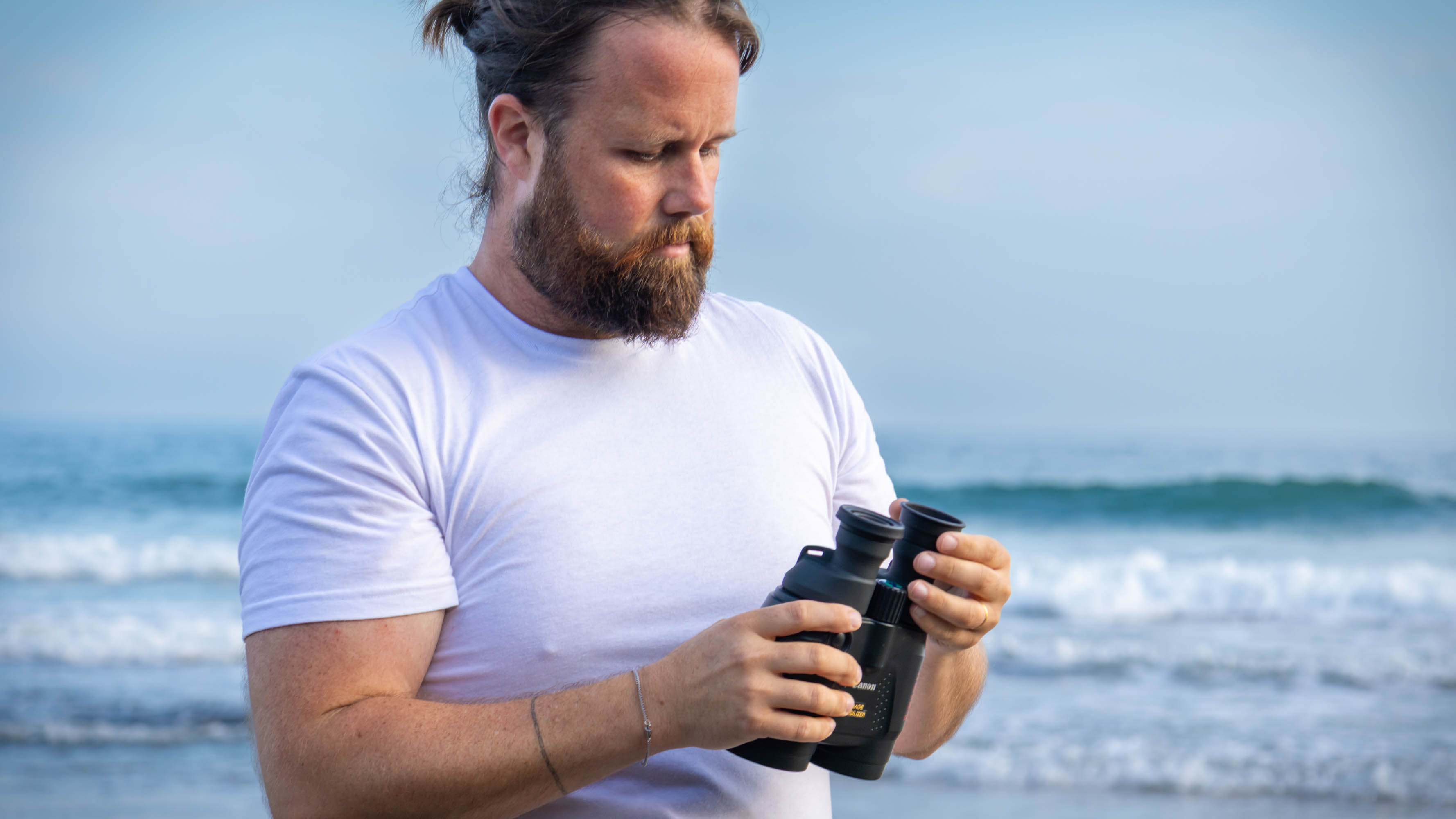
Canon 18x50 IS UD: Functionality
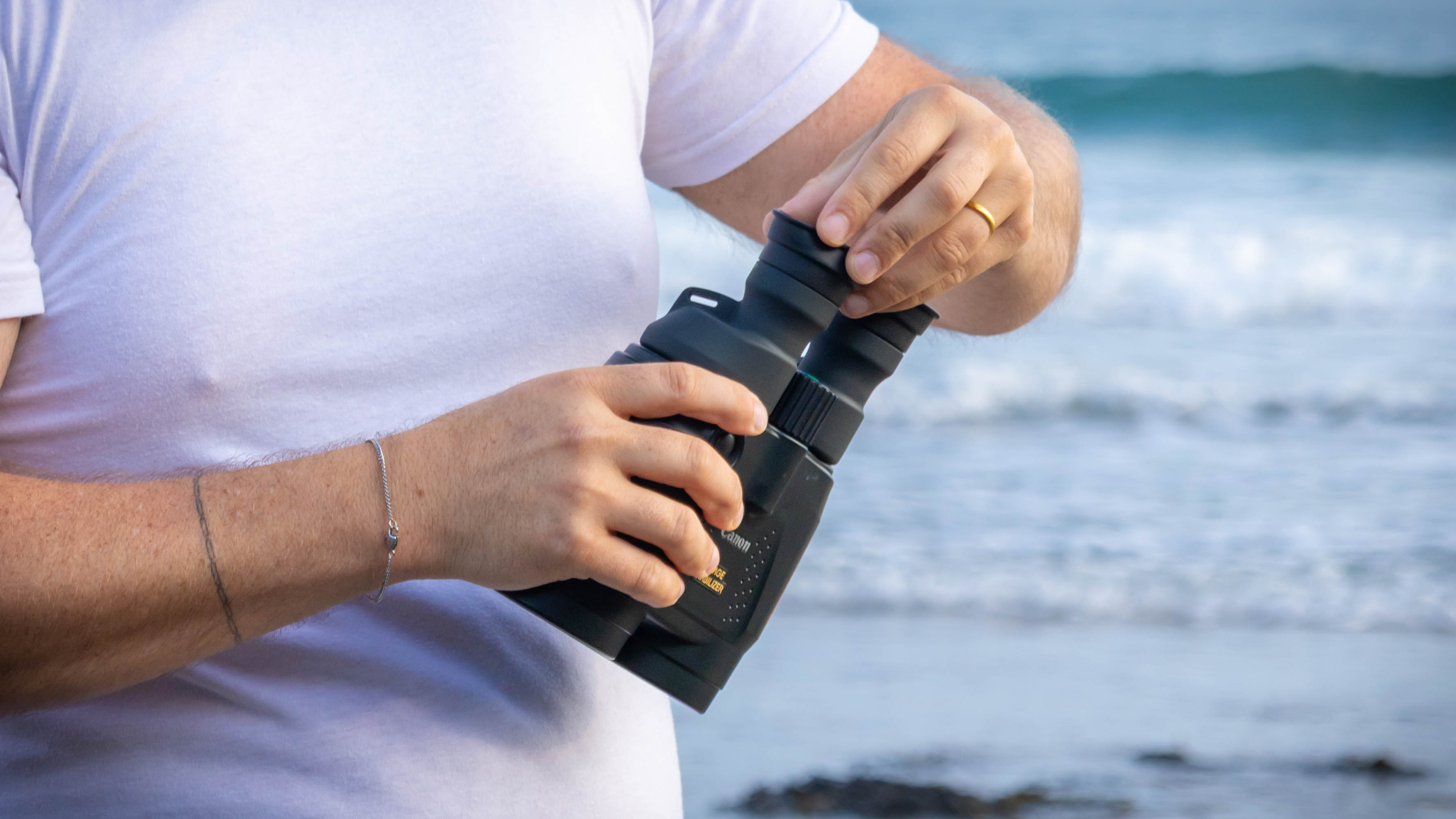
- Light is blocked by the rubber eyepieces to make for good stargazing
- Single button press to engage IS
- Sadly, no locking diopter ring
The flip-up and flip-down covers on binocular eyepieces are a bit of a bugbear for me — for eyeglasses wearers, there are limited adjustments that can be made to suit them. However, this is personal preference so I won't knock Canon for including them on these binoculars. Luckily, the rubber eyepieces are pleasant, causing no irritation to the skin and sufficiently blocking distracting urban light during stargazing sessions.
A single button press engages the image stabilization system — it couldn't be simpler. There is also a green LED lamp on top of the binoculars, next to the IS button, that lights up when it is engaged. A quick glance can tell you if you've left it engaged when you didn't mean to, and save you battery.
I was impressed with the diopter adjustment — it offered enough friction without being too rigid. But, something I always like to see, is a locking diopter which sadly these Canon's do not have.
Despite the porro prism design, and thus bulkiness, the way the neck strap connected to points underneath the eyepieces meant that they sat neatly into my chest when using the neck strap. The padded neck strap was also comfortable to wear for longer periods with no rubbing.
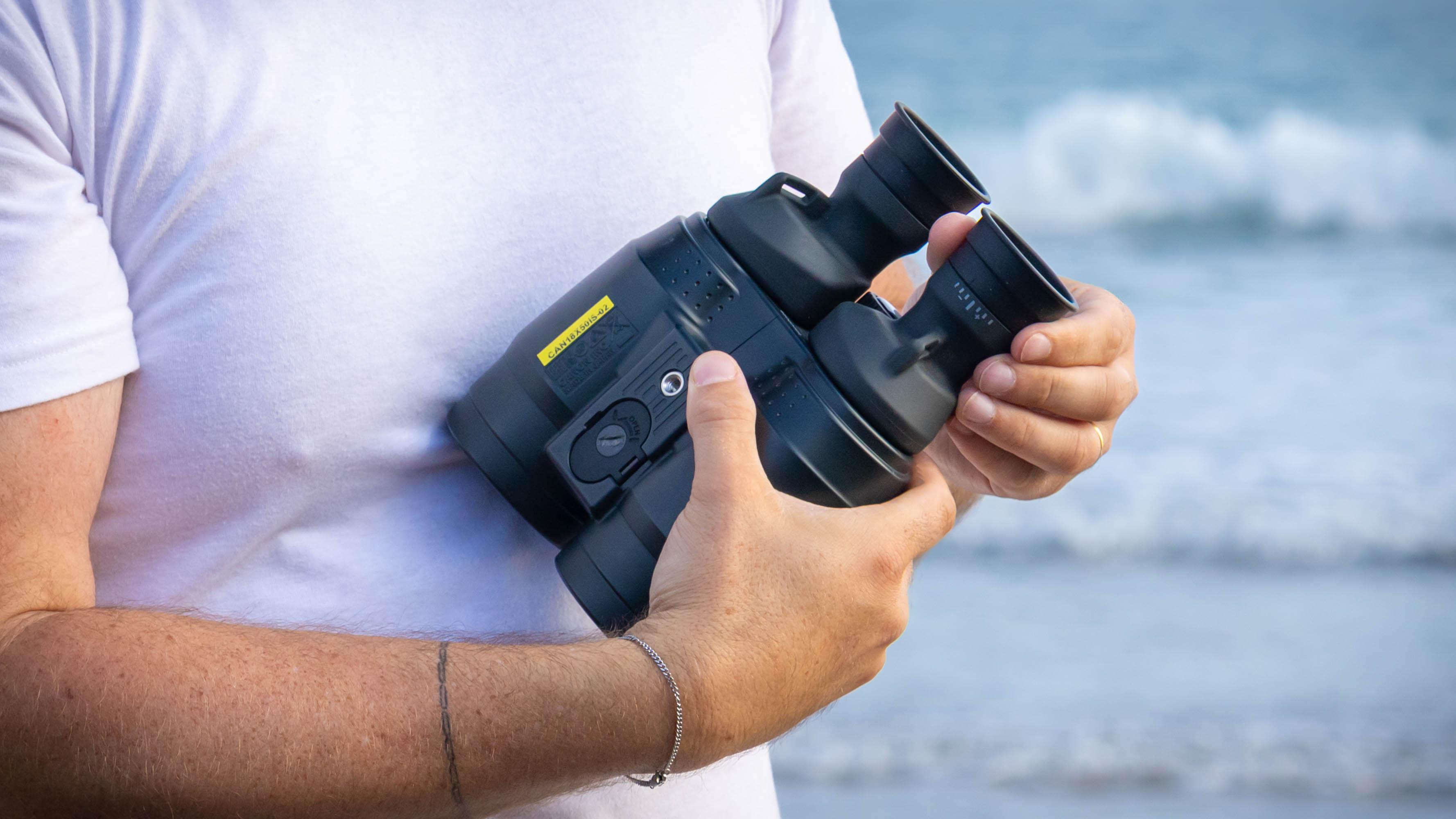
User reviews of the Canon 18x50 IS UD binoculars
Reviews of the Canon 18x50 IS all-weather binoculars online are generally positive, sitting at average ratings between 4.2-4.5 stars out of 5. One reviewer on Amazon stated that "While these are heavy and not practical for all applications, they work extremely well when weight is not an issue". Which we would agree with as they are over 2.5 lbs (1.18 kg). While others report that while the optical quality is fantastic they are unhappy with the eyecups, "The eyecups are hard to use and you have to jam them onto your face to get a good field of view or fold back the eyecups. I wish they had the standard twist outs that every other manufacturer seems to have that provide light control and is comfortable as well". With some reviewers even demonstrating they've cut the eyecups or added accessories to make them more comfortable.
How we tested the Canon 18x50 IS UD binoculars
I tested these mammoth image stabilized binoculars over three to four weeks in the summer in the UK. I stargazed in areas with Bortle Classes of between 3-6 with mixed weather during that time.
I did mount the binoculars to a camera tripod with a ball-head but found that navigating using this method was not ideal and the image stabilization was actually better, as long as my arm strength/stamina held. But for longer location stargazing or when hiking, I'd recommend a tripod with a gimbal head.
I did not test these binoculars in the rain because they are not waterproof but I had no issues with fogging during use, even though they are not fogproof.
Should you buy the Canon 18x50 IS UD binoculars?
The strong magnification, UD lens element and Super Spectra lens coating make these a great option for stargazers as you will get vivid views of the night sky. Stargazing in urban areas, I was able to see the fainter nebula (M42) and galaxies (M31) which was impressive.
If the Canon 18x50 IS UD isn't for you
Beginners and those interested in the odd stargazing session may not want to fork out so much for a pair of binoculars, especially as these have a premium price tag attached. They may also not suit those looking for a more travel-friendly pair of binos. Therefore, I'd recommend the Canon 10x20 IS as they are Canon's second-lightest pair of image-stabilized binoculars and they're cheaper. You also get good wide-field views of the night sky.
Another alternative is the Nikon 12x25 S image-stabilized binoculars. They come in a little cheaper than the Canon 18x50 IS UD's but still offer sharp views of the night sky. Plus, the image stabilization performs well and they're smaller and lighter.

Jase Parnell-Brookes is the Managing Editor for e-commerce for Space and Live Science. Previously the Channel Editor for Cameras and Skywatching at Space, Jase has been an editor and contributing expert across a wide range of publications since 2010. Based in the UK, they are also an award-winning photographer and educator winning the Gold Prize award in the Nikon Photo Contest 2018/19 and named Digital Photographer of the Year in 2014. After completing their Masters degree in 2011 and qualifying as a teacher in 2012, Jase has spent the last two decades studying and working in photography and publishing in multiple areas, and specializes in low light optics and camera systems.
You must confirm your public display name before commenting
Please logout and then login again, you will then be prompted to enter your display name.
